Last November, singer-songwriter and guitarist Ty Segall smashed a toilet with the help of the legendary producer and engineer Steve Albini. Albini pushed the porcelain bowl, emblazoned with Segall’s name, off a loading dock, causing it to shatter into many pieces, and Segall finished off the job with an axe.
Segall’s label, Drag City, posted a video of the act (the YouTube search term is “A Flush Down the Tylet”) to its website without any explanation, but this weirdness was hardly surprising coming from a musician known to perform onstage in an elaborate satanic baby costume.
Segall, a native of Laguna Beach, California, isn’t yet 30. But over the past decade, working solo and with various bands in the Bay Area and Los Angeles, he’s already created an impressive body of work that neatly synthesizes the sounds of his wide-ranging 1960s and ’70s influences: surf and garage rock, and early metal, among others.
Since releasing his self-titled debut in 2008, Segall has played most of the instruments on his albums. He approaches the guitar in an appropriately non-schooled way, getting maximum mileage from a select palette of harmonic and melodic sources, all with great frenzy and groove.
Segall recorded with a full band for the first time on his latest album, which is also called Ty Segall. Joined by guitarist Emmett Kelly, multi-instrumentalist Mikal Cronin, drummer Charles Moothart, and keyboardist Ben Boye, Segall continues to explore pre-1980s sounds on the recording while stretching out with extended jamming and clearly relishing the energy of leading a live band.
I chatted to Segall and Kelly about the period-correct gear they used in creating those sounds, how Albini captured them perfectly in the studio, and how their home state of California plays into all of this.
Let’s start by talking about guitars. You’re both Gibson players.
Ty Segall: Yeah. I play a ’69 Les Paul, but I got it looked at, and supposedly it’s a late ’50s one that just has a ’60s serial number. It’s totally beat to shit, but I love that thing.
What’s your history with that guitar?
Segall: I got it three years ago. Before that, I played a [Fender] Mustang kind of exclusively. I don’t know much about guitars really, and I’m not like a studied guitar player. I wouldn’t say I’m technical or anything, so it’s funny, now going back to the Mustang—realizing it’s a three-quarter scale. It feels like a toy compared to the Les Paul.
What’s it like going from the Mustang to the Les Paul in terms of sounds?
Segall: It’s like a similar thing with how it feels. The Mustang—it’s bright and twangy, whereas the Les Paul is full-bodied, resonant. The sustain is insane compared to the Mustang. It’s like a grown-up’s version of an electric guitar.
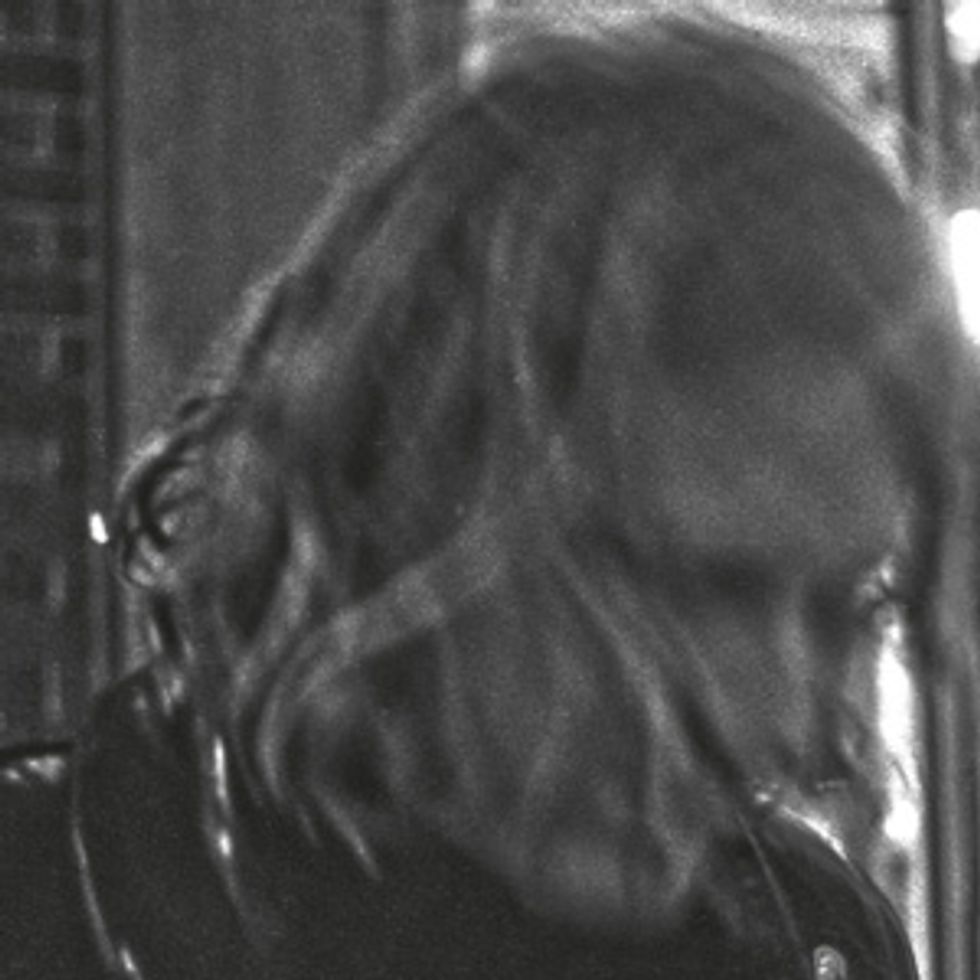
For his new album, Segall enlisted the skills of veteran indie-rock producer Steve Albini, who got beefy guitar tones and kept the tracking lean.
Have you found that your style has changed at all since you got the Les Paul?
Segall: With the Mustang, I was super-reliant on the tremolo bridge. There’s no whammy bar or anything on the Les Paul, so I’ve had to step up my actual playing instead of relying on sound effects.
Emmett, talk about your Les Paul.
Emmett Kelly: The guitar I played on the record was a modified ’59 Les Paul Special. Instead of the original P-90 pickups, it had Seymour Duncan Antiquities in it. I actually don’t have that guitar anymore. My main guitar now is a Les Paul with P-90s.
What amps did you use on the record?
Segall: My main squeeze is a ’72 Fender Quad Reverb. I’ve played a lot of Quad Reverbs and the silverface Fenders are all over the place. Some were made by the original crew and some were made by new factory workers, so they can be inconsistent. The one I have just sounds insane. It’s the loudest silverface I’ve ever played. I don’t know what I’d do if I didn’t have that amp. I’d probably stop playing music.
Kelly: I played a ’74 Marshall Artiste—a 100-watt head that’s been modified so that the right channel sounds more like a JMP-style Marshall—with a slant 4x12 closed-back cab.
What about effects?
Segall: I just got the Death By Audio Fuzz War, and I use a phaser pedal as well. I have an old [Electro-Harmonix] Small Stone that I really love. Also, Albini had an EarthQuaker Devices Grand Orbiter phaser that was really cool, too. The Small Stone only has two settings, and it sounds like [the band] Big Star or something. The EarthQuaker is more extreme. When you hit the fuzz on it, it kind of spazzes out a little bit, which is ideal. I’m not a fan of subtle effect use.
Kelly: The only effect I used—and that I ever really use in Ty’s band—is an overdrive. It’s a Crowther Hotcake from New Zealand.
Emmett Kelly’s taste for Gibson Les Pauls includes different flavors. He cut the album with a ’59 Special revamped with Duncan Antiquity humbuckers and currently he’s playing a goldtop with P-90s onstage. Photo by Debi Del Grande
Talk about your musical backgrounds.
Kelly: My parents are both drummers, so I grew up surrounded by, like, boogie-bar music, because they were bar-band musicians. When I was young, I listened to classic rock: Cream and stuff like that. Then, I got into Sonic Youth and punk-rock stuff, and that kind of changed things. From there I got into more acoustic music, like medieval folk and Irish music, and when I lived in Chicago I spent a lot of time doing free improvisation.
Everybody in my friend group taught each other what to do. We were figuring music out on our own, which was pretty cool. Charles, who’s the drummer on this record—an old, old friend of mine—we went to high school together, and we would just swap drum moves and teach each other licks. I was a drummer before I was a guitar player.
What impact do you think being a drummer has had on your approach to guitar?
Segall: I think it’s had a strong impact for the rhythm of strumming. I’m not a very crazy lead player. I don’t know many chords or scales, but I do know how to play rhythmically. And it definitely helps with writing, if you understand the counts.
Is your rhythmic approach something that you’ve cultivated or more of a natural ability?
Segall: I don’t think I’ve ever had a natural ability with guitar. It’s always been a battle, but a fun one. On the other hand, I think I’ve always had a natural sense of rhythm. Oftentimes, I’ll play drums first and then record guitar over it. It’ll be like I know the parts of the song based on time structure, and I’ll just make everything else up after that.
full-blown freaks.” —Emmett Kelly
Can you talk a little bit more about your writing process—any other strategies that you might use?
Segall: That’s pretty much it. I’m most insecure about my lyrics, so I can’t sit down and just write lyrics all day. I have a lot of friends that are great lyric writers. They have their journals and they sit down and use them to write some lyrics every day. I could never do that.
As much as you should have your brain turned on to write a song, it’s hard to sit down and try to think about a lyric. It doesn’t work for me. It’s all about not thinking, as weird as that sounds. If there’s a filter there, even if it’s an unintentional one, it doesn’t feel right to me.
What’s it like to be a musician in L.A.?
Kelly: I like the fact that L.A. is a little bit blown-out. It’s weird working in the music business because it’s just an odd profession, and people either thrive in really remote locations or really slammed locations. I don’t thrive in small towns, and as ridiculous as it sounds, Chicago, where I lived until recently, feels like a small town. I wanted to move to a place where no one’s very impressed by anything, so I moved back to L.A. It’s kind of amazing because there’s a youthful scene here—a lot of great rock ’n’ roll. It’s inspiring to be around because people don’t have too many qualms. They just like to have fun.
Ty Segall’s Gear
Guitars1969 Gibson Les Paul
1966 Fender Mustang
Amps
1972 Fender Quad Reverb
Effects
Death By Audio Fuzz War
EarthQuaker Devices Grand Orbiter
Electro-Harmonix Small Stone
Strings and Picks
GHS Boomers (.010–.046)
Dunlop .46 mm picks
Emmett Kelly’s Gear
Guitars1959 Gibson Les Paul Special with Seymour Duncan Antiquities
Gibson Les Paul goldtop with P-90s
Amps
1974 Marshall Artiste 100-watt head
4x12 closed-back slant cab
Effects
Crowther Audio Hotcake overdrive
Strings and Picks
D’Addario NYXL (.010–.046)
Herco Flat/Thumbpicks
What was it like to make your new album?
Segall: It was super fun. I haven’t made a record with a band playing my songs in the studio before. I’ve only made records where I play everything or most instruments, so it was a great experience to just play guitar and let everyone do their thing. It creates such a different feel to have a band
playing on a record. I don’t know why I hadn’t done that sooner.
Were you very specific about what you wanted everyone to play or did you let them come up with their own parts?
Segall: It was pretty much like, “Here’s how the song goes. I’m going to rip this solo. Feel free to
rip yours here. Here’s the jam section, so everyone, let’s just figure this out. Do whatever
you want.” Kind of like: These are the parts, this is what has to happen, and the rest should be free. I would never want to have a drummer that was scared to play how they want to play.
There seems to be a bit of improvisation on the songs—especially on “Break a Guitar.”
Segall: It’s controlled in a certain way, but then there’s a lot of looseness, so that is a huge, crazy jam. Emmett and I are both improvising. We’re basically just playing off each other. I’m not telling him what to do, and I wouldn’t tell him how to solo. You know, he’s insane. He’s such a psycho guitar player. That’s kind of the idea: keep it free and open, but within a structure.
Emmett, what was it like for you?
Kelly: It was fully badass. I love how when the guitar solo is ripping, Ty and I are just, like, full-blown freaks, you know? There was a lot of improvisation going on in general on the record, but Ty is a prolific songwriter and demo-maker,
and so he had the whole album pretty much mapped out. When Ty and I tear into these crazy solo sections, they’re just super bonkers. It’s fun because the spirit of it is really apparent—a positive vibe that you can feel when you listen to the record.
He used to play a Fender Mustang, but in recent years Segall has been cradling a 1969 Gibson Les Paul with a cherry sunburst finish, run into a silverface Fender Quad Reverb.
Photo by Debi Del Grande
What would you attribute that positive vibe to?
Kelly: Just making music together and having a good time. It also doesn’t hurt that the chemistry between everyone in the band is really cool.
Ty, can you talk more specifically about what it’s like to play with Emmett and how your styles mesh?
Segall: Emmett is the most versatile guitar player ever. He can literally play anything. I’m pretty much the one-trick pony, but Emmett is like the secret weapon. He’s a master at playing with you, and I feel like I’m a better guitarist when we're working together.
It’s cool and not competitive at all. It’s almost like we’re trying to push ourselves to get to this other place together. I’ve played with people where you’re both racing each other to the finish line or some shit like that, and that’s totally wack. But it’s super fun to play with Emmett. He’s doing radical shit and he takes you with him.
What was the recording process for the album?
Segall: We recorded it in four-and-a-half days and tracked it mostly live, adding just a little overdubbing—though some of the songs have like five, six vocal tracks on them just because I love putting down as many vocals as possible. Albini will overdub as much you want, but he’s usually pretty great at being like, “You know, I don’t think it needs anything else. I think you guys got it.” Then I’m like, “Well, there’s one little piano thing I was hoping to do,” and he’s like, “Okay.” It’s a nice compromise. I’m not one to go overboard with overdubbing. I’m more of the Albini philosophy of keeping it minimal and tight.
Kelly: The recording process was pretty straightforward in a kind of old-school sense. We went to Chicago with our gear and set it up, and Steve Albini engineered it. He’s amazing. He worked out how to figure out the sound we wanted for the guitars, bass, and drums. We all knew what we wanted to do, and we got it done quickly. We wanted the album to sound very spontaneous, and I think we nailed it.
Ty Segall has recorded eight earlier studio albums, but the new Ty Segall is the first he’s recorded live in the studio with a full band. “I don’t know why I hadn’t done that sooner,” he says. Photo by Debi Del Grande
Was this the first time you’ve worked with Albini?
Segall: Yes. I don’t know why I haven’t worked with him before. It was like taking a master class.
What did you learn working with him?
Kelly: It’s kind of illuminating to work in an environment like Steve’s, because he doesn’t try to get you to sound the way he thinks you should. He just wants to capture the way that you sound. Of course, I’m biased, but it’s a great record and it’s amazing to sit back and listen to how gorgeous all the tones are on it. I’ve recorded in many different settings, but I guess what I take away from this is that the sounds are as important as the songs and the guitar parts.
Segall: There are specific miking things I took away from it, like throwing a nice mini ribbon mic far away from the amp. But besides the technical aspect of how Albini mikes things, I think we’re pretty much on the same level with how we like to make records: The right feel of a take is far greater than playing it perfectly. That’s where the magic is.
YouTube It
In this performance at L.A.s’ Teragram Ballroom, Ty Segall wields his Les Paul Standard at hurricane force starting at 1:20, with a churning, feedback-spiked solo that updates the howling tones of Big Brother and the Holding Company’s live recordings.


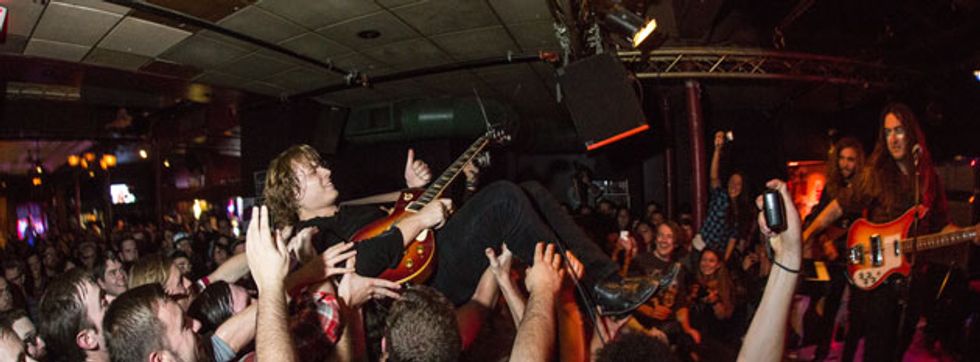

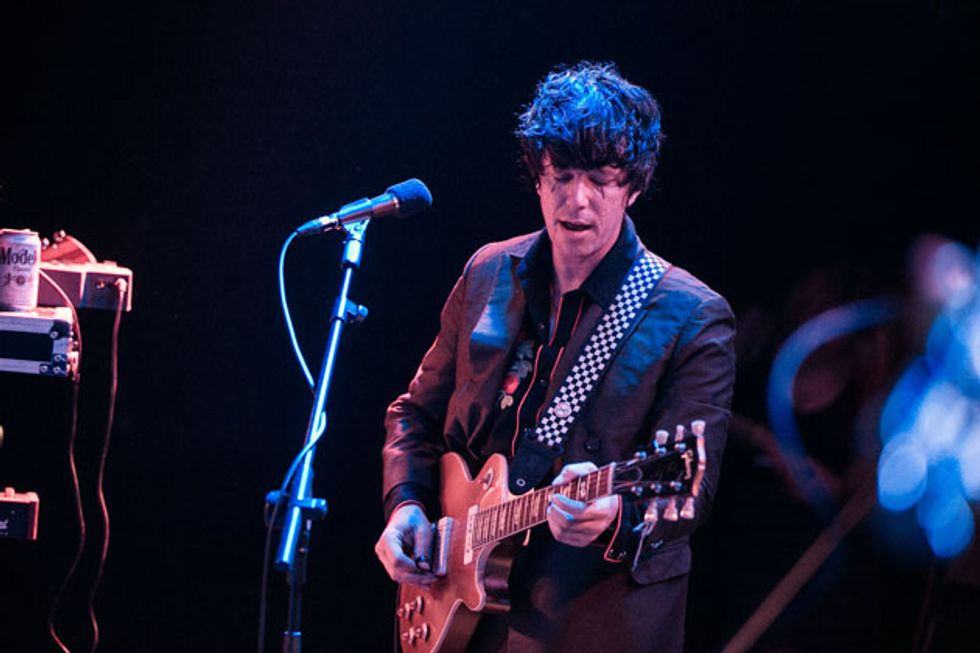
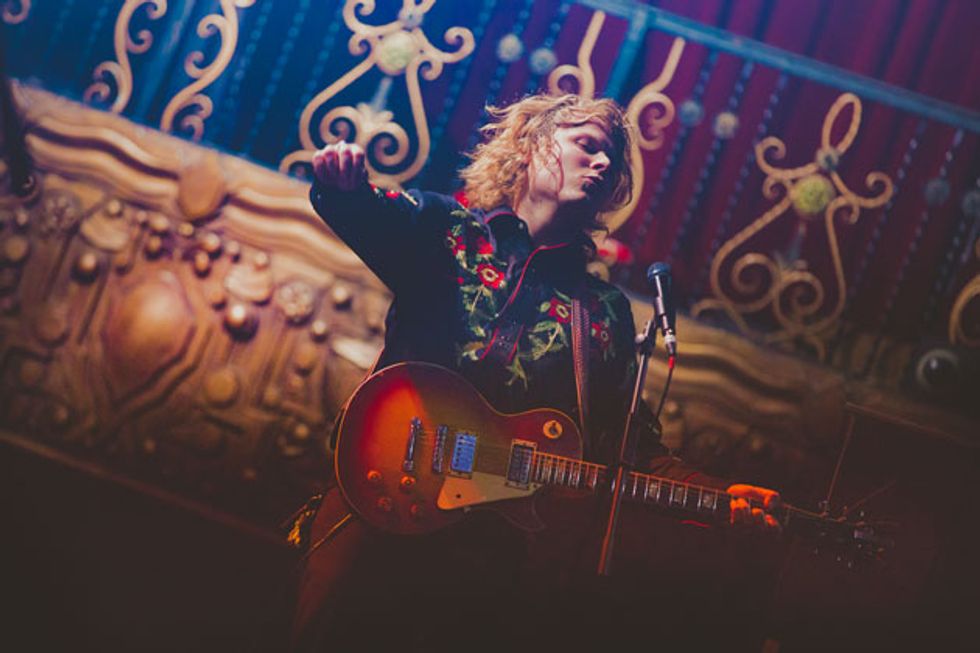
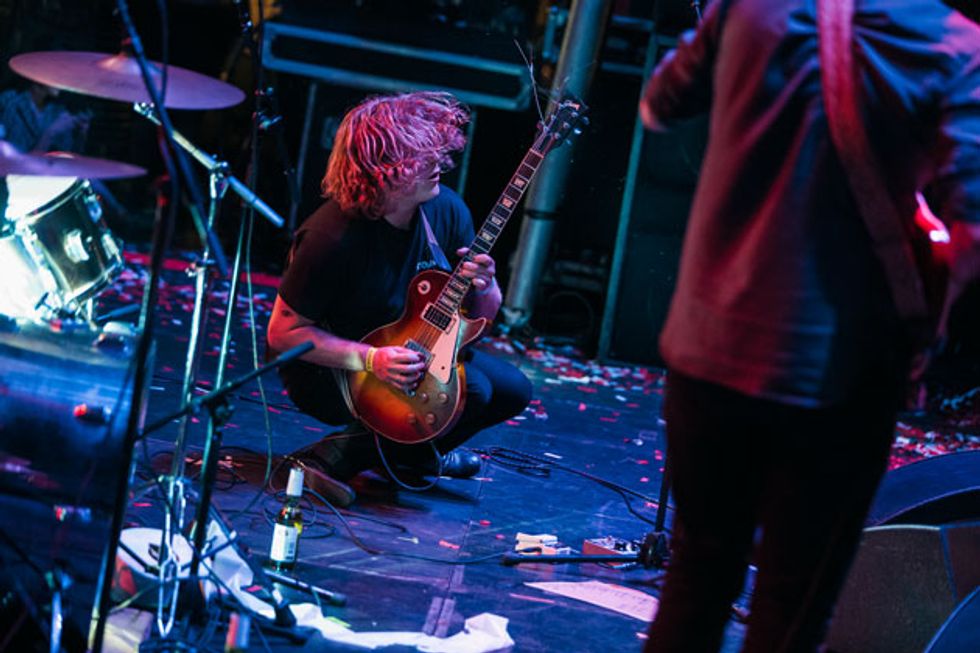











![Rig Rundown: Russian Circles’ Mike Sullivan [2025]](https://www.premierguitar.com/media-library/youtube.jpg?id=62303631&width=1245&height=700&quality=70&coordinates=0%2C0%2C0%2C0)
















![Rig Rundown: AFI [2025]](https://www.premierguitar.com/media-library/youtube.jpg?id=62064741&width=1245&height=700&quality=70&coordinates=0%2C0%2C0%2C0)




















 Zach loves his Sovtek Mig 60 head, which he plays through a cab he built himself at a pipe-organ shop in Denver. Every glue joint is lined with thin leather for maximum air tightness, and it’s stocked with Celestion G12M Greenback speakers.
Zach loves his Sovtek Mig 60 head, which he plays through a cab he built himself at a pipe-organ shop in Denver. Every glue joint is lined with thin leather for maximum air tightness, and it’s stocked with Celestion G12M Greenback speakers.






